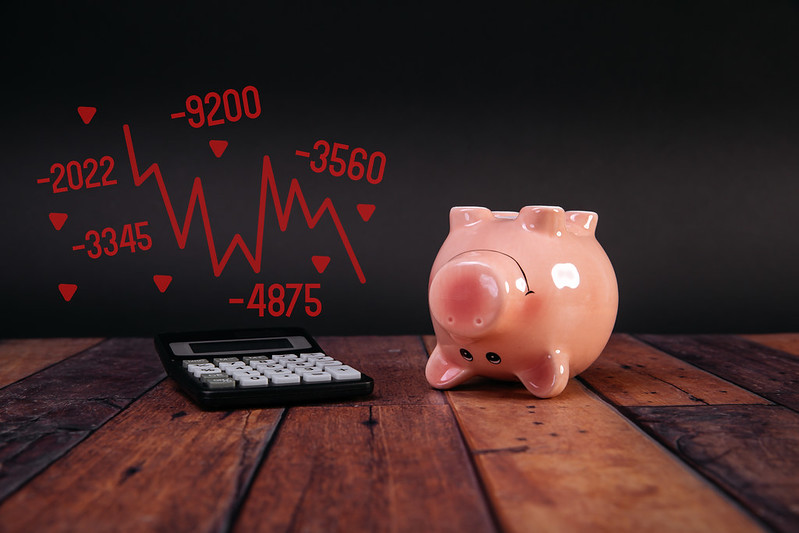By Ryan Larson.
Introduction
Throughout the current downturn in the cryptocurrency market, crypto investors have maintained the motto “Hold On For Dear Life.” The motto may seem especially true when a cryptocurrency such as Ethereum sees a 99% price decrease in a matter of minutes, only to immediately return to its prior price level. These “flash crashes” are not unique to crypto investing, but they occur more frequently on crypto exchanges than on a stock exchange. While these dramatic price dips often last only minutes, they can have massive long-term ramifications for cryptocurrency investors who were forced to sell during the crash because they were trading under certain industry constraints such as margin trades and using stop-loss orders. Flash crashes for even the most obscure of cryptocurrencies can wipe out millions of dollars in investor money. When such a crash occurs, investors are often left holding only losses and have limited to no legal recourse against the exchanges that forced them to sell their holdings.
Margin Trading and Stop-Losses
Margin trading allows investors to make bets on crypto markets with leveraged (i.e., borrowed) funds, while investors are required to only put up a small amount of capital themselves. For example, an investor with a 5x leverage could provide $1,000 (the margin) and the cryptocurrency exchange would supply the investor with $4,000 more to invest. Margin trading cryptocurrency is considered an incredibly risky form of investment.
The greatest benefit of margin trading is that it allows an investor to potentially magnify their gains well beyond what they would be capable of earning with only their available capital. However, the inverse is also true, as an investor is risking more money and has the potential for much greater losses. If a cryptocurrency bought on margin does poorly, an investor will be required to put up more collateral in a margin call or risk liquidation. Liquidation occurs when an exchange forcefully closes a trader’s leveraged position due to a partial or total loss of the initial margin and immediately sells all the trader’s holdings. Exchanges will liquidate if the investor’s position in a cryptocurrency falls below a certain price. The exchange takes any remaining collateral, and the investor owes the exchange for any losses that remain unrecouped.
Investors trading on margin may also use an investing tool known as a stop-loss order. A stop-loss order is an order that is placed with an exchange to sell a cryptocurrency if it falls beneath a certain price. For example, a customer may place a stop-loss order at $20 for a certain cryptocurrency. So, if the price falls below $20, the sell order is automatically placed, and the investor will receive the market price at which the order is completed. Investors use stop-losses to reduce risk and minimize their losses during a price downturn.
Flash Crashes
A cryptocurrency flash crash occurs when many holders of a crypto asset decide to sell at the same time, resulting in a steep decline in the cryptocurrency price for a short period of time. A flash crash varies from a standard market fluctuation because the price of the cryptocurrency tends to rebound quickly and return to a price similar to before the crash. Although not unique to cryptocurrency markets, flash crashes are not an uncommon experience in cryptocurrency investing, with the most recent major flash crash occurring in August.
For many investors, a flash crash may create short-lived concern about the value of their investment, but it will have minimal long-term impacts once the price rebounds. However, for investors using stop-losses and margin investing, a flash crash can have devastating financial consequences. One of the challenges of stop-loss orders is that just because a cryptocurrency hits a price that triggers the stop-loss order, the exchange is not guaranteed to sell at the stop-loss order price. The stop-loss order may take time to fulfill, which allows the cryptocurrency to continue to drop in price. A stop-loss order may be filled when the price of the cryptocurrency is well below the stop-loss order price, resulting in massive losses to the investor.
The Ethereum flash crash of 2017 provides a telling example. Ethereum was trading at $319 on the cryptocurrency exchange GDAX. One investor sold a multimillion-dollar stake in Ethereum, triggering a sizeable decrease in the price to $224. The huge decrease in price caused a large number of stop-loss orders and margin funding liquidations to be immediately placed. This caused the price to continue to fall, resulting in another 800 stop-loss and margin liquidation orders being placed. In a matter of seconds, a cryptocurrency that was trading at $319 was now trading at $0.10. The stock rebounded by the next day to once again trade at $325. However, due to the brief crash, many investors had their holdings automatically sold at huge losses by GDAX and had no way to return to their original investment position.
In many instances of flash crashes, investors in cryptocurrencies aren’t losing huge sums of money because of excessive risk taking. Instead, the losses are triggered by the protocols of cryptocurrency exchanges that immediately execute liquidations and complete stop-loss orders significantly below the set price in the midst of a flash crash. Oftentimes, these crashes will be triggered by a single investor executing a large sale. Other times, the crashes are caused by errors in an institutional trader’s algorithms. In either event, smaller investors are the ones left holding the losses.
Possible Regulatory Changes
The harms caused by flash crashes have created a more pressing need for regulation of cryptocurrency exchanges and their practices. Lawsuits have previously been filed or threatened against cryptocurrency exchanges alleging negligence during flash crashes, but such legal challenges have been infrequent. Due to the lack of current regulation over cryptocurrency exchanges, investors are often left at the mercy of an exchange’s terms and services, which generally require disputes to be settled in arbitration. Occasionally, exchanges will reimburse customers for losses suffered during a flash crash, but such actions by exchanges are rare.
Government regulators could learn from the example of the most recent major stock market flash crash in 2010. The Securities and Exchanges Commission (SEC) introduced several safeguards following the flash crash. These safeguards included preventing algorithms from moving shares too quickly outside of set price bands. Additionally, exchanges were required to provide increased transparency on trades and to cancel any trades that were considered to be “clearly erroneous.” The increased transparency and regulations for traders have helped eliminate flash crashes within the market and investor losses from those crashes.
Regulators will face a challenge in creating safeguards for cryptocurrency flash crashes due to the lack of a clear regulatory overseer in the industry. The Commodity Futures Trading Commission (CFTC), SEC, and other government agencies are currently locked in a battle over who gets to regulate cryptocurrencies and trading exchanges. In the meantime, either States, the exchanges themselves, or Congress could act to protect investors.
While States could pass more stringent regulation, they tend to take an opposite approach and pass legislation that is more appealing to cryptocurrencies. Arizona passed A.R.S. §§ 41-5601 to 41-5612 in 2018. The legislation, which was largely targeted at cryptocurrency and blockchain, creates a “regulatory sandbox” for participants in Arizona to test innovative financial products or services without first obtaining a license from the state. Arizona continues to court cryptocurrency related business. The state appropriated $2.5 million to research blockchain related technology in 2019-2020. Additionally, the Arizona Technology Council emphasized the importance of expanding the benefits of the regulatory sandbox in its 2024 Public Policy Guide.
Most states are unlikely to take serious steps to regulate cryptocurrency. Exchanges are even less likely to act to increase regulation governing themselves. Players in cryptocurrency tend to take a libertarian approach to the industry. As of right now, major cryptocurrency exchanges such as Coinbase and Binance have rejected approaches common to the stock market such as “circuit breakers” that would automatically halt trading if a cryptocurrency’s price falls by too much.
Congress will likely need to step in and create a form of regulatory guidance to protect individual cryptocurrency investors. Cryptocurrency exchanges are unlikely to self-regulate, and government agencies lack true guidance on the type of regulatory power they possess in the cryptocurrency industry. Thus, issues in the industry are being determined through protracted legal battles between agencies and exchanges. The best step Congress could take would be to clearly spell out which agencies have authority to regulate cryptocurrency. By either giving the SEC or CFTC clear authority, Congress would enable those agencies to begin to act in a manner similar to how they proceeded after the 2010 stock market flash crash.
Cryptocurrency is an inherently risky market. However, to allow individual investors to suffer huge financial losses due to a flash crash outside their control goes beyond risk and is an untenable result for regulators to allow. Congress should provide clear direction to government regulators, who can institute circuit breakers and other regulations that will protect U.S. investors navigating the cryptocurrency market.


